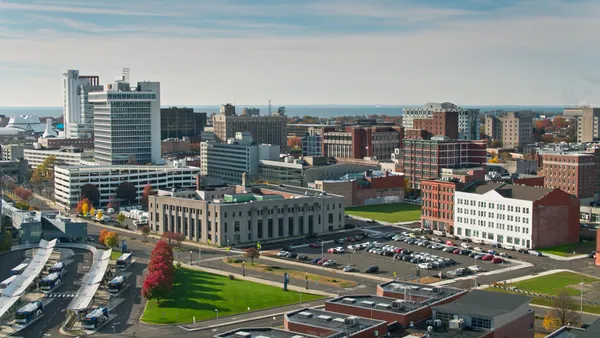Dive Brief:
- To help Los Angeles put government properties to better use, LA Controller Ron Galperin has released an online, interactive mapping tool with data on 14,000 publicly-owned properties in city limits.
- The Property Panel tool shows buildings owned by six government entities: the city of Los Angeles, the county of Los Angeles, LA Metro, the state of California and the federal government. Of those, 7,508 are owned by the city itself.
- The tool was developed with mapping firm Esri and expands on work Galperin’s office has done since 2017 to catalog city-owned properties.
Dive Insight:
Galperin has long looked to underutilized city property as a possible salve to the city’s affordable housing problem, which has seen rents rise an average of 32% over two decades and spur an increase in homelessness. The city also sees its property as possible sites for education and economic development programs. But knowing where those properties were — or even how many there were — has been a challenge.
Creating the map and releasing it to the public can allow the city and county to think "more strategically" about vacancies and possibly spur "unconventional ideas" from government leaders and residents, Galperin said in a statement.
Other cities have seen benefits from cleaning up vacant buildings. A study from the University of Pennsylvania earlier this year found that when vacant lots were cleaned up in Philadelphia, neighborhoods saw a 29% decrease in gun violence and a 22% decrease in burglaries.
New York City has tried to incentivize affordable housing construction on vacant lots through the city’s Big Ideas for Small Lots NYC design competition, which saw designers and architects submit proposals for building on public property.
Cities have increasingly created maps and online portals to share data, whether it be budget information or construction permits and events. Part of the appeal of the public map is that it can show city council members and neighborhood groups where the potential is in their districts, and empower them to lobby for changes, but there are still plenty of barriers to new construction or rehab of buildings.










